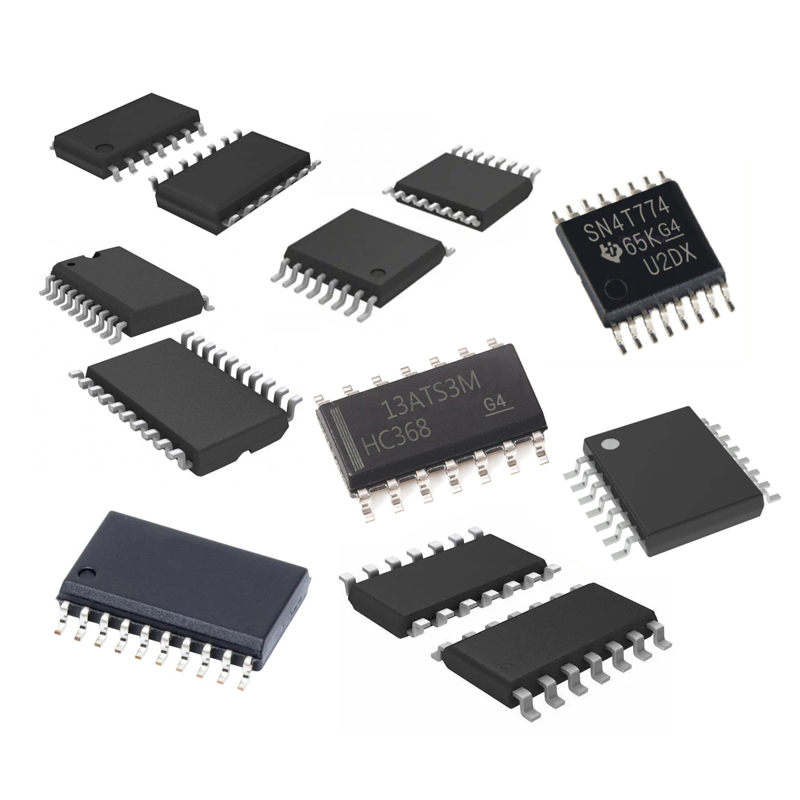
Electronic components are packaged in various ways to accommodate different sizes, shapes, and applications of the components. Here are some common packaging methods:
1. Tube Packaging: Suitable for small-sized electronic components like integrated circuits. The components are placed inside small plastic tubes and filled with protective material, while plastic end caps are used for sealing.
2. Tape Packaging: Appropriate for large-sized electronic components such as inductors. The components are placed in plastic film with isolation material between each component. Then, one or multiple layers of components are packaged together and rolled into a cylindrical shape.
3. Bag Packaging: Used for small-sized components like diodes and transistors. Components are placed in plastic bags, filled with protective material, and then sealed using sealing equipment. Bag packaging is cost-effective and easy to manage and store but requires secondary sealing equipment for sealing.
4. Box Packaging: Utilizes paper or plastic boxes as packaging containers, suitable for larger components like relays and power supplies. Components are fixed in plastic trays or foam and surrounded by protective material. Box packaging is easy to manage, store, and unload but requires more storage space and transportation costs.
5. Tray Packaging: Rectangular dividers are used to divide the tray into specified cavities, and components are individually loaded into the cavities. Generally, there are 50 components per tray, and a protective film covers the tray after loading. Trays come in single-layer or multi-layer configurations for automatic feeding.
6. Stick Packaging: Also known as strip packaging, mainly used for packaging rectangular chip resistors, capacitors, and some irregularly shaped and small-sized components. Components are overlapped in the same direction and arranged in plastic sticks (usually 100-200 components per stick). The ends of the sticks are inserted into the feeder of the placement machine using stop pins.
7. Tape-and-Reel Packaging: One of the most common packaging methods for small components like chips and diodes. Components are placed on a continuous strip of tape, either plastic or paper.
In addition to the above common packaging methods, there are specific packaging technologies such as TQFP (Thin Quad Flat Package), PQFP (Plastic Quad Flat Package), and TSOP (Thin Small Outline Package), designed and applied for specific integrated circuits and components.
So how to choose the packaging method?
In electronic component packaging, the lowest cost is typically determined by various factors including component size, shape, quantity, protection requirements, transportation, and storage conditions. However, in general, bulk packaging may be one of the lowest-cost packaging methods.
Bulk packaging involves placing chip components freely in molded plastic boxes or bags without additional packaging materials or complex packaging processes, thus resulting in relatively low costs. However, bulk packaging may not be conducive to component protection and storage as components are susceptible to damage or contamination during transportation and storage.
Another relatively low-cost packaging method is tray packaging. Tray packaging uses rectangular dividers to divide trays into specified cavities, and components are loaded individually into these cavities. Although this method requires some packaging materials, it is still relatively low-cost compared to other methods. Moreover, tray packaging can provide some protection, making components less prone to damage during transportation and storage.
It is important to note that while some packaging methods may be lower in cost, they may not meet specific requirements for protection, storage, or transportation. Therefore, when choosing a packaging method, it is essential to consider various factors to ensure the safety and quality of components during transportation and storage.
Eurotech is a worldwide supplier and exporter of electronic components, specializing in ICs, LCDs, Memory, Chips, computer parts, networking equipments and other passive components.
Tel: (86) 755 83952292
E-mail: global08@eurotech-ic.com
https://www.eurotech-ic.com/